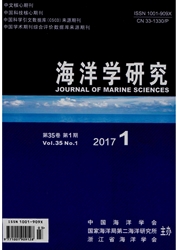

 中文摘要:
中文摘要:
三维成像雷达高度计(China Imaging Altimeter,CIALT)是中科院空间中心在传统高度计的基础上,结合偏离天底点观测技术与高度跟踪测量技术、合成孔径技术和干涉技术发展起来的新型雷达高度计。其中,偏离天底点技术是为了增大刈幅宽度,高度跟踪技术是为了兼容海陆信息的观测,合成孔径技术是为了增加方位向分辨率,干涉技术是为了测量像素点的高程值。CIALT相当于是一部Ku波段、小于5°入射角的SAR,它的成像机理与SAR和InSAR基本相似,同时也能够达到传统高度计那样的厘米量级的精确度。但是,CIALT的入射角小于5°,它发射的电磁波不满足发生Bragg散射和二尺度散射的条件,只能发生准镜面散射。因此,CIALT不能完全应用SAR的一些遥感机理和研究算法,但是可以在SAR的研究基础上发展自己的遥感机理和研究算法。CIALT技术主要是解决增加有效测量点和减小时间间隔的问题,它满足了现代海洋研究与应用对于海洋参数采样空间间隔和时间间隔的要求。它在海洋三维立体成像、海洋大地水准面、洋流、中尺度涡、海面风场、海浪和潮汐等方面有良好的应用前景。
 英文摘要:
英文摘要:
The China Imaging Altimeter (CIALT) is designed on the basis of the traditional altimeter by the Center for Space Science and Applied Research of the Chinese Academy of Sciences. CIALT integrates three techniques together, i.e. the off-nadir looking and height-tracking measurement technique, the synthetic aperture technique and the interferometric technique. The off-nadir looking is used for enlarging the swath. The robust height tracking is for getting both ocean and land signal compatible. The synthetic aperture technique is used for achieving a higher azimuthal resolution. And the interferometric technique is for retrieving the height information corresponding to each image pixel and for boresight angle correction of the antennas, which is crucial for accurate height measurement. CIALT is equivalent to the SAR of Ku-band and less than 5° of incident angle. The imaging mechanism is basically similar to SAR and InSAR. Because of its small angle, the electromagnetic waves emitted can't meet the Bragg scattering and the Two-Scale scattering, only the quasi-specular scattering may happen. Therefore, CIALT can not completely use the remote sensing mechanism and research method of SAR, but it can develop its own mechanism and research algorithm. CIALT can increase the effective measurement point and reduce the time interval of sampling, which meets the requirement of modern marine research and the applications for spatial and temporal intervals of the parameters. It has good application prospects in the observation of three-dimensional ocean surface, marine geoid surface, ocean currents, mesoscale eddies, ocean surface winds, waves, and tides, etc.
 同期刊论文项目
同期刊论文项目
 同项目期刊论文
同项目期刊论文
 期刊信息
期刊信息
